Understanding Relays, part 3: Troubleshooting
Before we discuss troubleshooting relay-related wiring, let’s review. Last week we talked about the standard DIN numbers used on relays and the incredible utility they represent.
In any circuit with a DIN relay, without looking at a wiring diagram, you know that:
- Terminal 86 supplies power to the relay’s internal electromagnet.
- Terminal 85 grounds the electromagnet.
- Terminal 30 supplies power to one of the internal switch contacts.
- Terminal 87 connects the other internal switch contact to the device controlled by the relay.
- When you power terminal 86 and ground terminal 85, it energizes the electromagnet, which pulls the internal switch contacts closed, which connects 30 (power) to 87 (the device), which sends power to the device.
With that understood, you can easily troubleshoot any circuit that uses a relay. For those who prefer the left-brain, lay-it-out-in-a-table approach:
|
Terminal |
Which Circuit? |
Definition |
|
86 |
Low current (control) |
Relay coil + (power input) |
|
85 |
Low current (control) |
Relay coil – (ground) |
|
30 |
High current (load) |
From battery + |
|
87 |
High current (load) |
Output to device, normally open, pulled closed when coil is energized |
|
87a |
High current (load) |
Only used on single-pole double throw (SPDT) “changeover” relays. Output to other device, normally closed, pulled open when coil is energized |
And for those who prefer right-brain pictures, note that the photo doesn’t show the 87a terminal, as this is only used by single-pole-double-throw “changeover” relays that are less commonly used than the four-terminal single-pole-single-throw (SPST) relays described here.
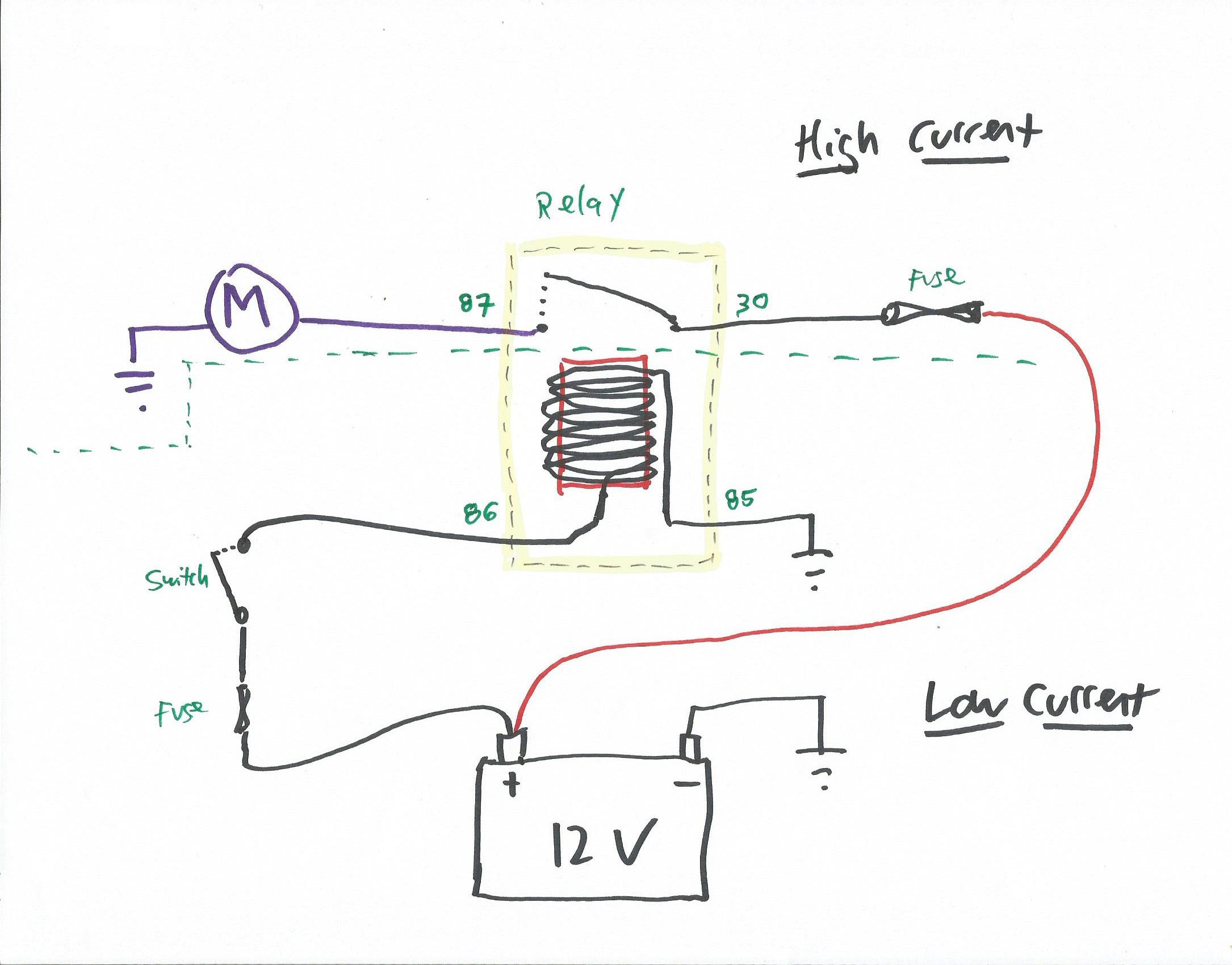
Relay vs. Socket DIN numbers
When troubleshooting relay-related wiring, you need to be very clear about the DIN numbering and not confuse the numbering on the underside of the relay with the numbering on the socket the relay plugs into. They are the mirror-image of each other.
The DIN terminal numbers are nearly always embossed on the bottom of the relay. They may or may not be stamped on the socket the relay plugs into. If they’re not, simply take a piece of paper, draw the terminals on it (each terminal drawn correctly, either vertically or horizontally, so they accurately reflect the relay), then label the terminals mirrored left to right from how they are on the bottom of the relay. Then lay the paper next to the socket.
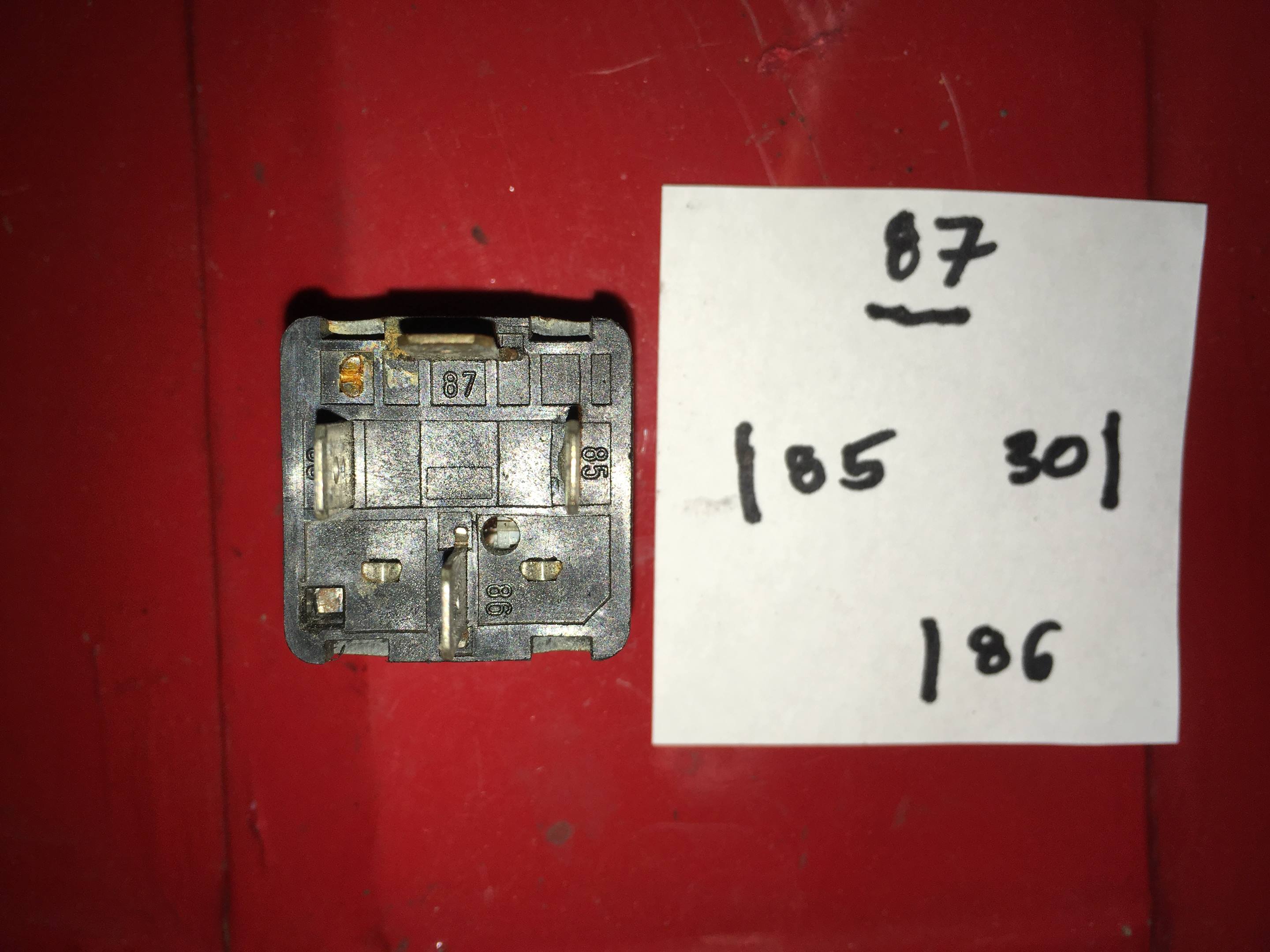
Trouble-shooting the relay itself: Does the relay click?
As I have stated several times previously, every mechanical relay has a little electromagnet in it, and when it is energized it pulls the internal switch contacts together. That makes an audible clicking sound. You also can feel the contacts closing if you lay your hands on the relay.
So, for example, if your horn doesn’t work, the first thing to do is turn it on (e.g., hit the horn button), and listen to and feel the relay. If you hear or feel the relay click, the relay and its wiring aren’t the problem. But if it’s not clicking, the problem could be in the relay itself or in the wiring. You need to figure out which.
To test the relay itself, take two wires, each about a foot long with a female spade terminal at one end and stripped at the other end. Attach one spade connector to relay terminal 86 (coil +). Attach the other to relay terminal 85 (coil ground). Touch the 86 wire to the battery’s positive post, and the 85 wire to the battery’s negative post. Actually, unless the relay has a diode in it, it won’t matter if the polarity is switched; the electromagnet will be energized regardless. You should hear and feel the relay click. If you don’t, the relay isn’t working. Replace it.
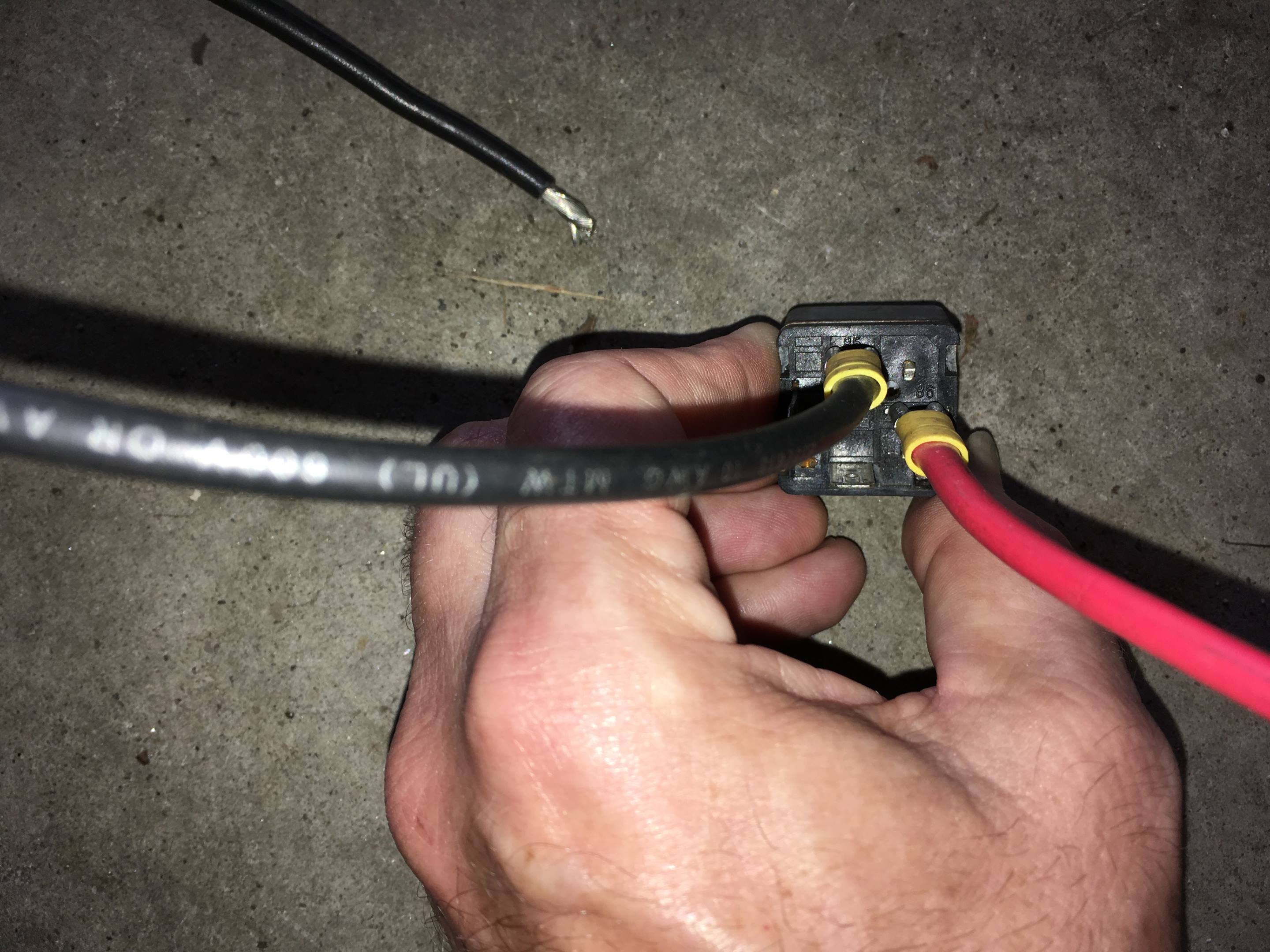
For extra credit, you can set a multimeter to measure conductivity (resistance) and connect it across relay terminals 30 and 87. When you touch 86 and 85 to the battery, the electromagnet pulls the switch contacts together, so the resistance between 30 and 87 should read essentially zero (under one ohm). If it doesn’t, the relay isn’t working. Replace it.
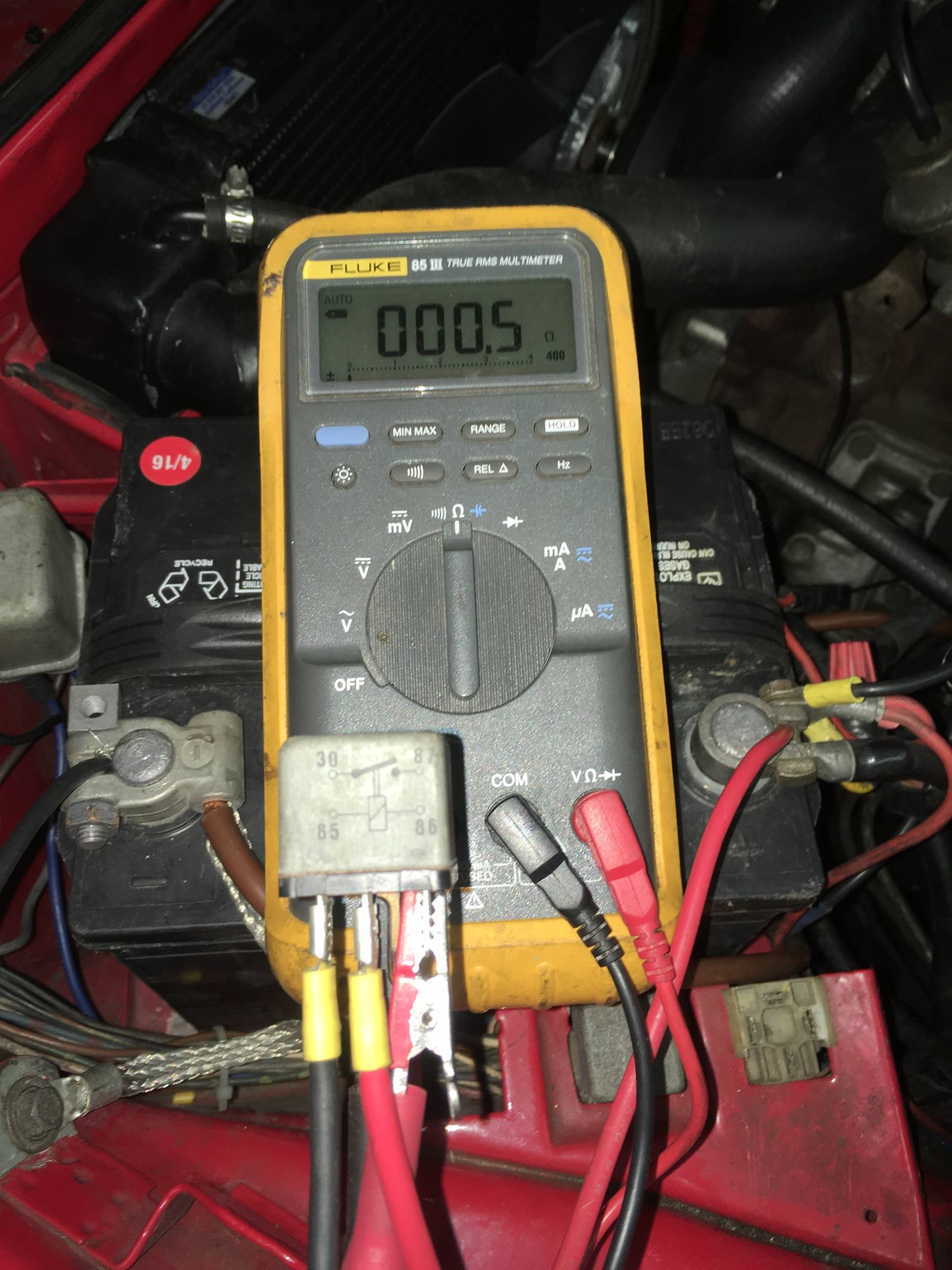
If your relay is a SPDT “changeover” relay, you can independently monitor the change in continuity from 30 to 87 and then from 30 to 87a to verify the switch opening and closing for both of the high-current paths.
If the relay does click and 30 and 87 do show continuity, there is still the possibility that the internal contacts are corroded and a voltage drop across them is preventing full current from flowing. Take that thought and park it for a moment.
Testing the relay wiring
If the relay itself tested as good, then the relay wiring must be tested next. As with most relay-related things, it’s best to think about this in terms of low current (control side) tests, and high current (load side) tests. Consult the DIN table and the figure above.
Test the low current (control side). Set the multimeter to measure voltage, connect the black probe to ground, and use the red probe on socket terminal 86. Turn the circuit on (e.g., turn on the motor, flash the headlights, beep the horn, whatever it is you’re testing) and verify that 12V is present on 86 when the button is pushed, and it vanishes when the button is released.
[insert pic: img_2465. Caption: “Testing for and finding voltage at socket terminal 86.”]
Then test 85 by setting the multimeter to measure resistance, probing socket terminal 85, and making sure that there is continuity between it and ground. (Note that if the circuit is for a horn, most horns are switched on the negative side of the control circuit, not on the positive. That is, on a horn, 12V should always be present on 86, and 85 is grounded when the horn button is pressed).
If the control side fails either of these tests, you must troubleshoot the wiring. Often it is a problem in whatever is switching the control side on and off. For example, on a horn, the problem is often in the spring-loaded plunger behind the steering wheel that touches the ring contact that grounds terminal 85.
On the high current (load side), test that 12V is present on socket terminal 30, and that there is continuity between 87 and the device. Note that, on some old cars, 30 and 87 may be switched—that current flows in 87 and out 30 instead of the way it reads in the DIN table. As long as the relay doesn’t have a diode in it, that’s fine. It’s just a switch. Current can flow in and out either side of the switch. If the only thing you find wrong is that 87 is always hot and 30 goes to the device instead of the other way around, don’t worry about it.
Jumpering Across the Relay
If the circuit passes the high current (load side) tests, you should be able to simply jumper across terminals 30 and 87 to fire up the device. Remember: All that a relay is doing is remotely connecting 30 to 87, so in manually connecting 30 to 87 with a jumper, you’re not doing anything the relay isn’t doing. Before you do this, remember that this is the high current side of the relay, and a lot of current may begin flowing through your jumper wire as soon as you make contact, creating a burn hazard. It is best to de-energize terminal 30 first by shutting off the ignition, but on some cars, 30 may still be hot even with the ignition off.
Take a stout piece of wire (at least 12 gauge) about 6 inches long and crimp a male spade terminal to each end.

Shut the ignition off. Use a multimeter to measure the voltage at socket terminal 30 and verify that it is off. If it’s not, wear gloves so any sparking or heating of the jumper wire doesn’t burn you.
Plug one end of the jumper into socket terminal 30, and the other end into socket terminal 87. If there’s voltage on 30, you may see a small spark when you plug the jumper into 87. The device should turn on. If it does, there is no problem with the high current (load) side wiring, and the problem must be either in the relay or in the control side wiring.
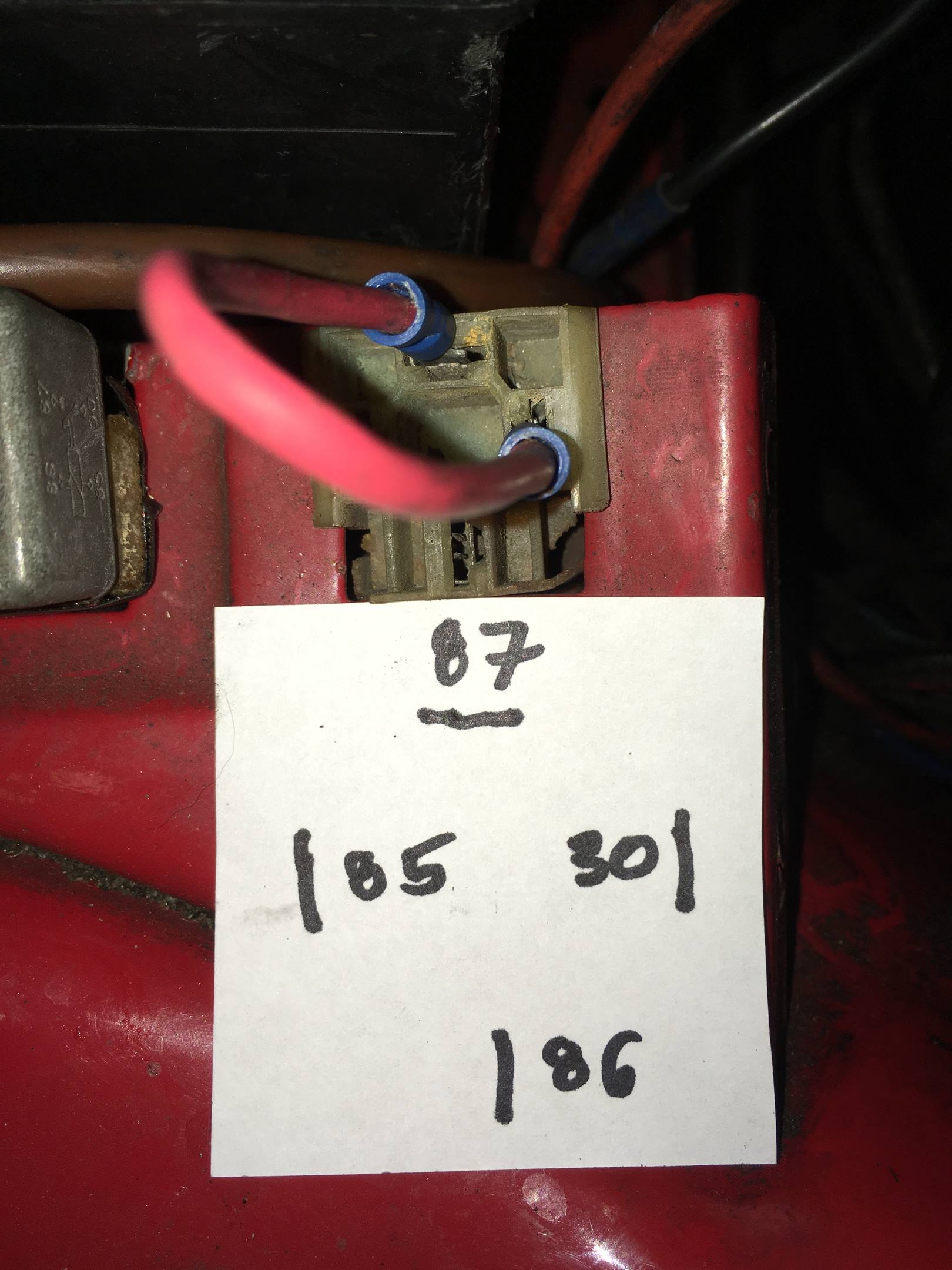
If your relay is a SPDT “changeover” relay, you can independently jumper 30 to 87 and then 30 to 87a to manually test the turn-on of both high-current loads.
If you’ve done these tests and have still not figured out why the device doesn’t turn on, the problem is likely that either the device itself is bad, there’s a high-resistance failure in the relay’s internal switch contacts, or there’s a break in the path between the device and ground.
I don’t usually hawk my electrical book, but there is a highly-detailed chapter on relay circuit troubleshooting containing greater depth than I’m able to go into here.
So that’s it. Relays and the circuits that use them are really pretty simple. Just keep repeating … “It just connects 30 to 87… it just connects 30 to 87…” You’ll be fine.
***
Rob Siegel has been writing the column The Hack Mechanic™ for BMW CCA Roundel Magazine for 30 years. His new book, Ran When Parked: How I Road-Tripped a Decade-Dead BMW 2002tii a Thousand Miles Back Home, and How You Can, Too, is available here on Amazon. In addition, he is the author of Memoirs of a Hack Mechanic and The Hack Mechanic™ Guide to European Automotive Electrical Systems. Both are available from Bentley Publishers and Amazon. Or you can order personally inscribed copies through Rob’s website: www.robsiegel.com.


Very good article went into alot of detail. And made it simple to understand. I do have a question. If power is always on pin 86 will relay operate as it should